I’m Naoki Gaman, a photographer based in Aomori Prefecture, Japan. I mainly shoot BMX and Snowscoot (a winter sport invented by a French BMX rider that combines a handlebar-equipped frame with two snowboard-like boards)—both of which I enjoy myself—as well as other action sports like skateboarding and snowboarding. These genres are often described as action sports or urban sports photography, a field that captures the raw energy, creativity, and individuality of athletes in dynamic environments. While the terminology varies, I’ll use “urban sports photography” throughout this article for convenience.
By Guest Contributor Naoki Gaman
What You’ll Learn In this Article:
- How to capture the energy and individuality of BMX, skateboarding, and Snowscoot riders.
- Why wide-angle lenses like the Tamron 16-30mm G2 are ideal for urban sports photography.
- Techniques for shooting from low and high angles to emphasize tricks.
- How compact, lightweight gear expands creative possibilities on the move.
- Ways to blend cultural landmarks and sports for powerful storytelling in your photos.
In Japan, urban sports have recently grown in popularity. As the number of athletes increases, so does the number of people who enjoy photographing these activities. Still, it’s a relatively new culture, and I believe many are still figuring out what makes a compelling urban sports photography image and how best to capture it.
For this shoot, I used the Tamron 16-30mm F/2.8 Di III VXD G2 (Model A064) for Nikon Z mount. This lens brings together the strengths of both wide-angle and standard zooms, and it allowed me to fully enjoy the process of shooting BMX racing, skateboarding, and other urban sports. Through this field test, I hope to share not only the capabilities of the lens, but also the joy of capturing the unique energy of urban sports.
Capturing the Dynamic Essence of Urban Sports Photography with an Ultra Wide-Angle Lens

Focal length: 16mm Exposure: F3.2, 1/1250 sec., ISO 200 | Skater: Akira Tanaka | Location: POSSIBILITY PARK
The first location I visited with the 16-30mm F2.8 G2 was a skatepark—specifically designed for skateboarding. For the skateboard photography shoot, I went to two locations in Saitama Prefecture: POSSIBILITY PARK and Skatepark Kobayashi. Both parks are open not only to skateboarders but also to BMX riders.
The individuality of urban sports and the reflection of a person’s style and character is what makes the world of urban sports so compelling. As a photographer, I strive to deepen my own expression so I can capture images with similar depth and impact. I approach every shot with the intention of portraying the unique atmosphere and raw energy of each rider and moment.
How I Got the Crail Trick Shot
To emphasize the height or complexity of a section, I often shoot from a low angle—what we call an “upward shot.” The photo above is one of the main visuals captured using this lens. It shows a skater performing a trick called a “Crail,” where the rear hand grabs the nose (front) of the board—a move that requires a high level of skill. The chosen location made the trick even more challenging and impressive.
For this particular shot, I pre-composed the scene and asked the skater to “do something here.” The entire crew got excited about the eye-catching, exotic setting, but it was actually a narrow, steep area with limited room to maneuver, and I had requested a specific spot for the trick. After some thought, the skater said, “Let me try a Crail,” and nailed it on the first attempt. Thanks to his skill and instincts, I was able to capture this incredible moment.
There was a wall directly behind me, so I couldn’t step back any further—but thanks to the 16mm wide-angle end of the lens, I was able to fit the expansive blue sky, the palm trees, and the curvature of the bowl section all into the frame. I was able to preserve not just the action but also the surrounding atmosphere of the location.
Shooting BMX Tricks with Creative Angles

Focal length: 16mm Exposure: F3.5, 1/1000 sec., ISO 200 | BMX Rider: Joji Mizogaki | Location: POSSIBILITY PARK
This photo captures a trick proposed by the BMX rider himself. I asked him to adjust the takeoff angle and position so that the tile artwork in the background would be included in the frame. The trick is called a “Toboggan.” The name comes from the idea of riding a small sled and pulling on imaginary reins—this trick mimics that motion. The key moment to capture is when the rider grabs the seat with one hand. Skilled riders like him go even further by adjusting the handlebar angle and shifting their body weight just right, making it a trick that allows for deep personal expression.
Capturing a Backseat Grab X-Up from Above

Focal length: 16mm Exposure: F3.5, 1/200 sec., ISO 200 | BMX Rider: Masaki Terabayashi | Skate Park Kobayashi
For this image I shot from above, as opposed to the more common low-angle approach. The ultra-wide 16mm angle allowed me to frame both the rider and the surrounding section. The trick being performed is called a “Backseat Grab X-up,” which combines grabbing the seat from behind with an “X-up,” a move where the rider crosses their arms and rotates the handlebars 180 degrees. I chose to shoot from above because I felt it best conveyed the coolness of the trick. The ideal angle always depends on the trick, the shape of the section, the direction of movement, and the height—and there’s never just one “right” answer.
Compact and Lightweight Gear that Expands Creative Possibilities

Focal length: 16mm Exposure: F3.5, 1/1000 sec., ISO 200 | Snowscoot Rider: Kota Aso | Mount Hakkoda
Since I often get around on my BMX or Snowscoot before and after shoots, lightweight gear is essential. The 16-30mm F2.8 G2 for Nikon Z mount weighs only 15.9 oz. Its unexpectedly light and compact build greatly supported my shooting experience.
Shooting Snowscoot in the Mountains
The shot above was taken on a snowy mountain, capturing a Snowscoot rider in action. After taking a ropeway up, we hiked another 20 minutes to reach this location. Snow-covered mountains are beautiful and fun, but they also come with many risks. For our safety, bringing heavy gear isn’t a smart choice. In situations like this, I often limit the number of lenses I carry—and the 16-30mm F2.8 G2 proved to be an all-in-one solution. With its broad focal length range, it allowed me to capture a variety of shots with just one lens.
TAMRON × AOMORI × Nebuta × BMX — A Cultural Crossover
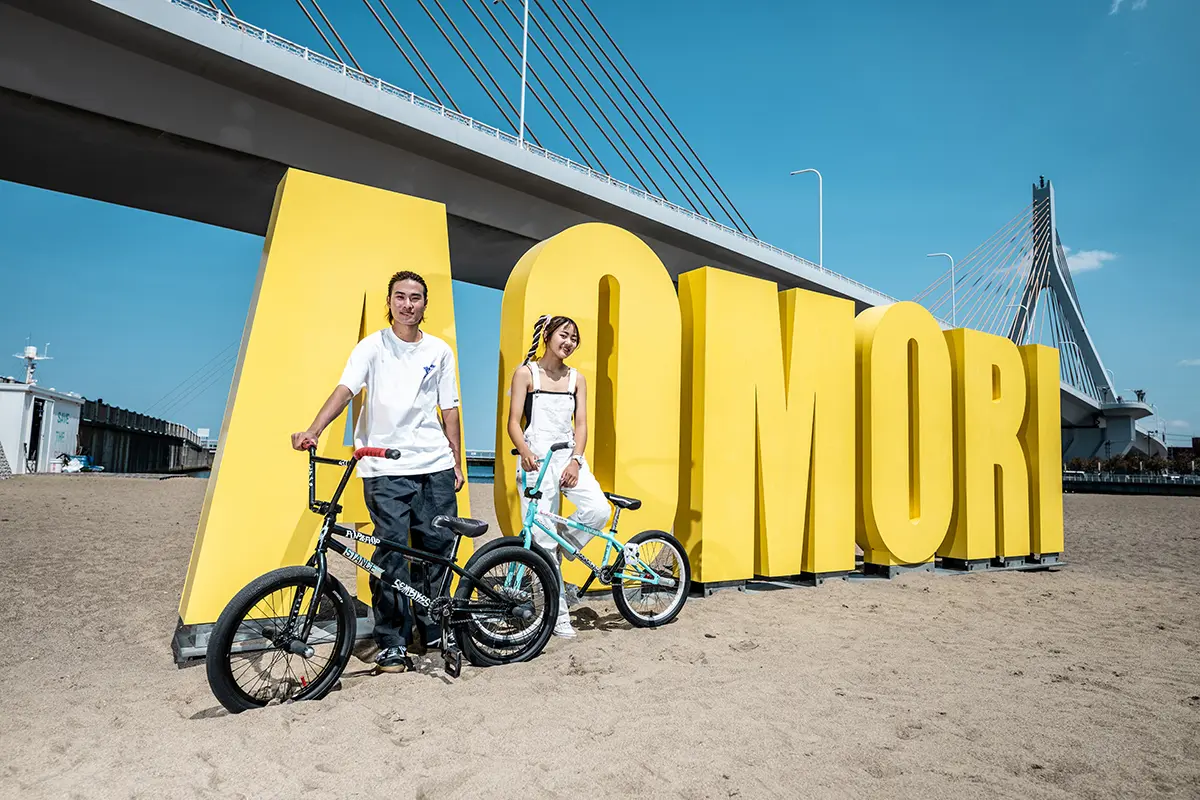
Focal length: 22mm Exposure: F3.5, 1/1000 sec., ISO 50 | BMX Rider: Rhyme Hommura & Carin Hommura | Beach near the Aomori Station
As I mentioned earlier, I’m based in Aomori, which also happens to be the home of Tamron’s main manufacturing facility. Thanks to that connection, I had the rare opportunity to photograph at several iconic locations around the region.
This shot was taken at the beach near Aomori Station. The bright yellow “AOMORI” sign and clear blue sky created a vibrant, uplifting mood. I carefully adjusted my composition while looking through the viewfinder, using the zoom range to strike a balance with the Aomori Bay Bridge in the background. I settled on 22mm—right in between the 16mm and 30mm ends—to capture the ideal frame.
Shooting at Aomori Love Bridge
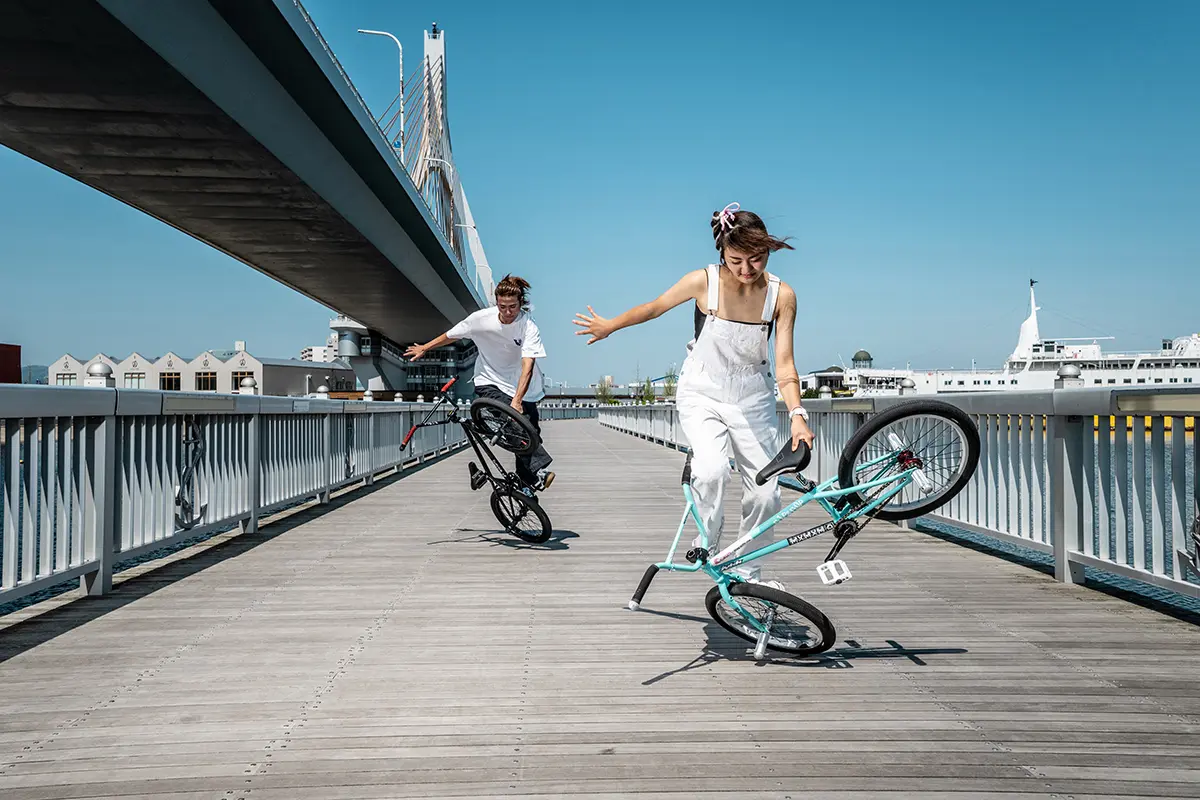
Focal length: 30mm Exposure: F8, 1/1600 sec., ISO 400 | BMX Rider: Rhyme Hommura & Carin Hommura | Aomori Love Bridge
This image was shot at the “Aomori Love Bridge,” a walkway stretching over the water. To highlight the sibling BMX riders collaborating in the shot, I zoomed in to the 30mm end and stopped down slightly. Even at F8, the lens maintained excellent resolving power.
Using Wa Rasse as a Dramatic Backdrop
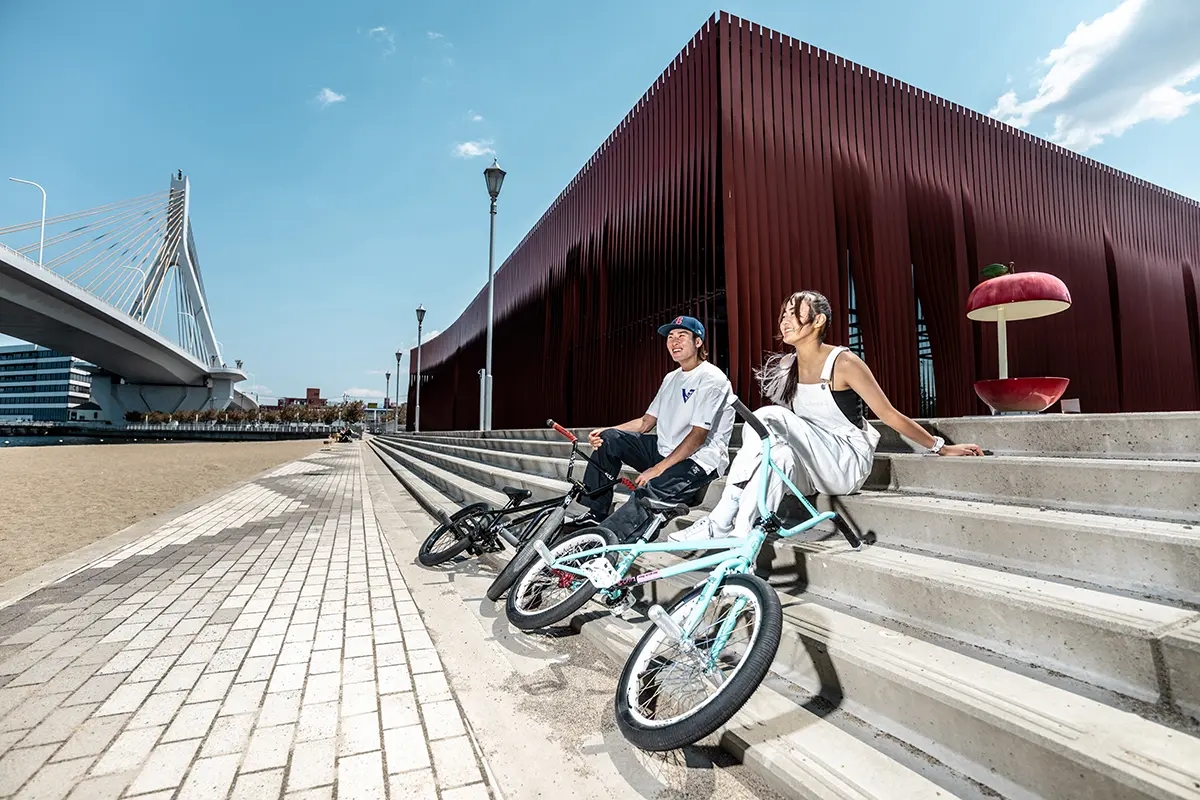
Focal length: 16mm Exposure: F3.5, 1/640 sec., ISO 50 | BMX Rider: Rhyme Hommura & Carin Hommura | Beach near the Aomori Station
After exploring Aomori’s bay area, we headed to a new location with Wa Rasse as the backdrop. This facility showcases the history and cultural appeal of Aomori’s iconic summer festival, Nebuta, which is designated as an Important Intangible Folk Cultural Property of Japan. The striking red building seen in the background is Wa Rasse, located right next to Aomori Beach. Using the wide 16mm end of the lens, I captured the expansive blue sky, the Bay Bridge, the apple monument, and Wa Rasse all in a single frame.
Blending Culture and Sport in Urban Frames

Focal length: 25mm Exposure: F3.5, 1/1250 sec., ISO 125 | BMX Rider: Rhyme Hommura | Location: Wa Rasse
The bold red steel panels on Wa Rasse’s exterior cast dramatic striped shadows in the sunlight. I was struck by the scene and positioned a strobe to align the BMX rider’s shadow with those stripes. Since the pathway was narrow, I wanted to shoot wide—but not too wide, or the strobe would enter the frame. After some testing, I found that 25mm was just right.
A Fresh Perspective on Urban Snapshots
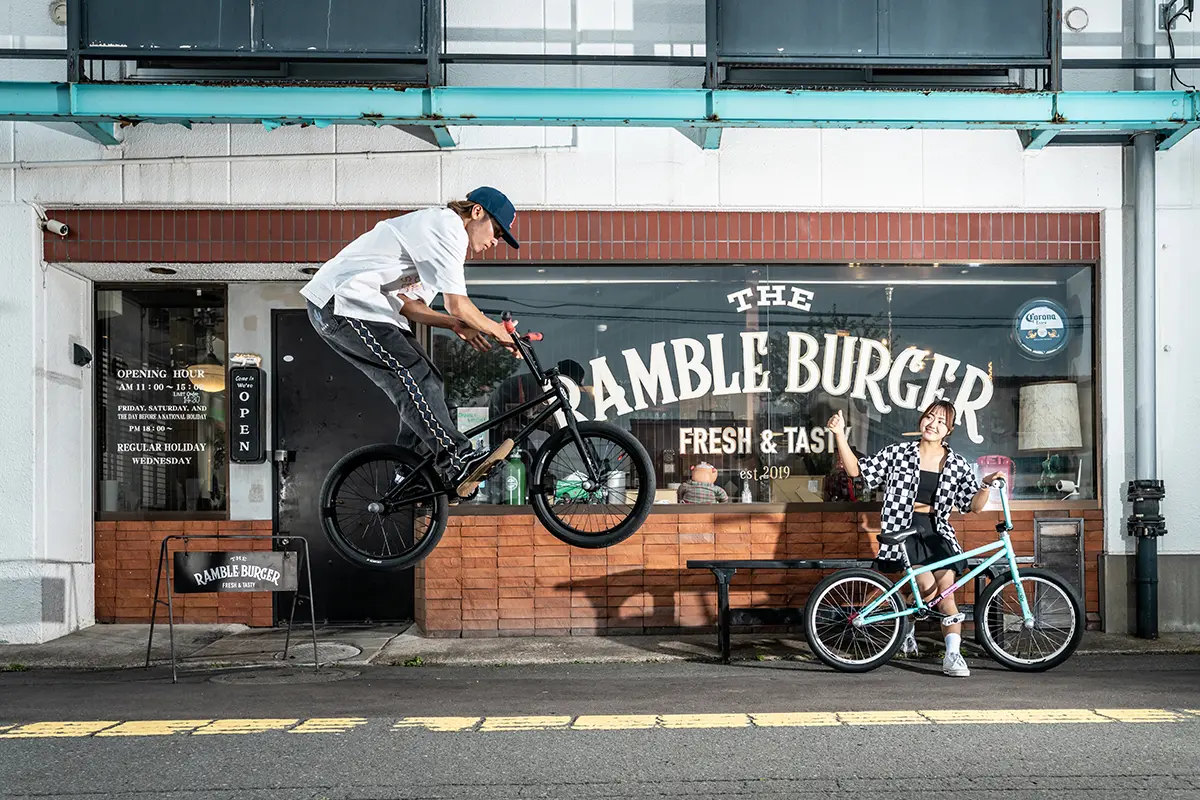
Focal length: 30mm Exposure: F5.6, 1/1000 sec., ISO 400 | BMX Rider: Rhyme Hommura & Carin Hommura | RAMBLE BURGER
As a reward for our hard work, we stopped by a burger shop. Despite being exhausted, the riders couldn’t resist playing around while waiting for their food. Outside the restaurant, I used the 30mm end to capture more natural angles, and inside I switched to the 16mm wide-angle to make the most of the tight indoor space.
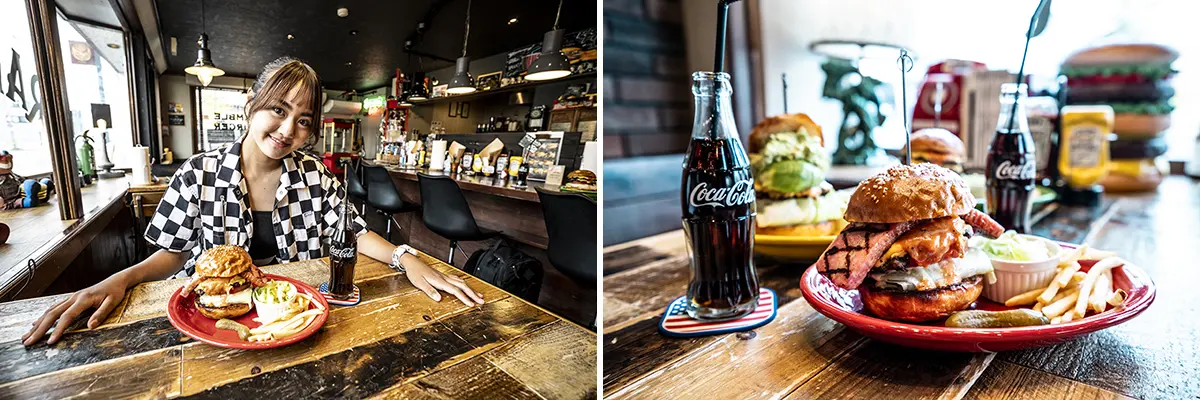
This lens also performs exceptionally well at close distances. Even when you can’t step back—like when shooting tabletop scenes indoors—it still lets you get the shot. The soft background bokeh made the burgers stand out beautifully. The juicy patty, melted cheese, rich sauce, and grilled bacon were all rendered with mouth-watering detail—the shimmer of oil and the sizzle of the meat came through so naturally, it was truly appetite-inducing.
My Thoughts After Trying the Tamron 16-30mm G2 for Urban Sports Photography

Focal length: 16mm Exposure: F3.5, 1/1000 sec., ISO 64 | Skaters & BMX Riders: Akira Tanaka & Joji Mizogaki & Masaki Terabayashi & Hideyuki Kudo | POSSIBILITY PARK
I usually prefer using a fisheye lens and feel it’s practically essential for shooting urban sports. But the 16-30mm F2.8 G2 challenged that notion in the best possible way. At the wide end, it delivers the unique visual impact that’s essential for urban sports. And on the longer end, it offers a more natural perspective—combining what I typically get from both a fisheye and a standard zoom, all in one lens.
On top of that, it delivers beautiful image quality. With its internal zoom design, it stays the same length throughout the zoom range, giving it a sleek appearance. The simple yet premium finish also gives me that extra sense of excitement when I pick it up.
Of course, you can’t replicate the distinctive distortion of fisheye with this lens. But in some situations, that distortion can be undesirable—so being able to choose between the two vastly expands your creative options.
When people think of urban sports, they often imagine top-level athletes performing mind-blowing tricks. But at its core, this culture was born from play. There’s beauty in the relaxed moments at familiar spots, or in a rider landing something simple that pushes their own personal limits. Those irreplaceable moments of value are all around us.
I hope that this lens helps more people experience the joy of shooting urban sports—and that more and more of those valuable moments are captured and preserved in photos. That would be the greatest reward of all.
Learn more about the 16-30mm G2 and other Tamron lenses at an authorized Tamron dealer near you or visit the TAMRON Store.
About Naoki Gaman
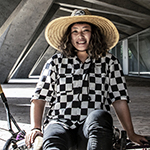
Naoki Gaman is based in Aomori and specializes in BMX photography. She captures images of riders in action, as well as skateboarders and snow sports athletes. Since 2019, she has served as the official photographer for the international women’s BMX media “The Bloom BMX” and runs her own Japanese BMX magazine, 81BMX.
She has served as an official photographer for various events, capturing riders ranging from children to legends. At the 2020 Tokyo Olympics, she worked as a photographer for the Union Cycliste Internationale (UCI), the international cycling federation, and documented BMX freestyle and racing events.
Special Thanks to the Skaters and Riders Featured in This Article
- Kota Aso | Instagram
- Hideyuki Kudo | Instagram
- Leon Shirai | Instagram
- Rena Shirai | Instagram
- Akira Tanaka| Instagram
- Masaki Terabayashi | Instagram
- Joji Mizogaki | Instagram
- Carin Hommura | Instagram
- Rhyme Hommura | Instagram
Supported by
- POSSIBILITY PARK | Instagram
- Skate Park Kobayashi | Instagram
- Aomori City Organization, Economics Department, Tourism Division
- Aomori Port Management Office, Tosei Prefectural Land Development Office
- Nebuta Museum WA RASSE
- Takashi Kitamura (Nebuta Artisan)
- Shunichi Kitamura
- NTT Group Nebuta
- Yamato Transport Nebuta Executive Committee
- RAMBLE BURGER
